
See some simlarities up there? Maybe? A little?
So here's a thought I had a while back (as in, when bloody blogger is going to say I made this post. Silly computer). Check out these three pictures. Lots of crinkles and wrinkles. I've revised my definitions of those two terms in the past few weeks. I've used them interchangeably up until now, but I'm confusing myself.
Henceforth, "crinkles" are impermanent folds and "wrinkles" are the cracks and crevices that happen to skin that crinkles a lot. With age or just genetic um... there are scientific words to put here. It's like fetuses know they're going to want to bend their fingers a lot so they make wrinkles right from the get go.
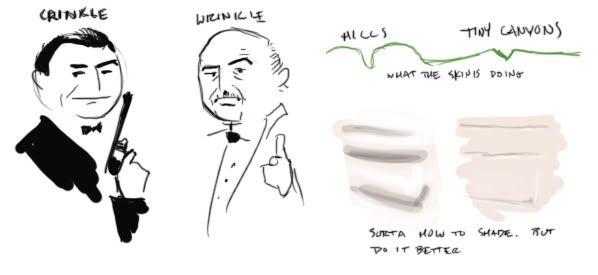
I think about skin like fabric and stone a lot. I was thinking back on some things I've learned about geology and sewing and I thought "well gee, if we've taken it this far, maybe I can stretch that analogy even further." Funny thing is that it totally worked, and it's totally useful.
Things I used fabric-y thoughts for:
The folds around the knees, the fingers and toes, and the 20-something male under-neck poof (It's adorable ps). You know, foldy things.
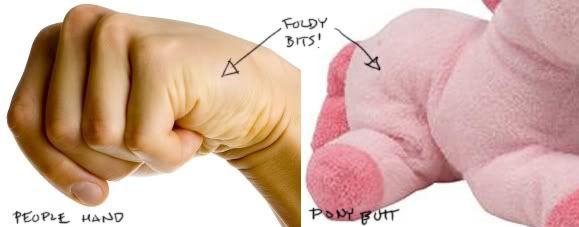
Also, cheeks and forehead crinkles. Gathery things.
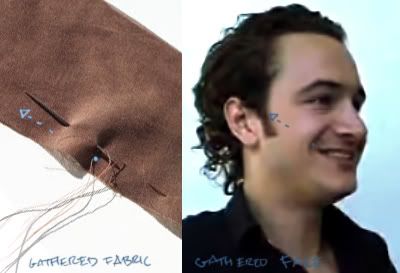
Fabric-y thoughts I didn't think to think:
What happens when you forget to do laundry and have to wear that size-five-years-ago t-shirt to work? I mean, after the blood sweat and tears that goes into folding your shoulders down enough to get your arms into the sleeves. You start seeing these crinkles running parallel to the direction of the tension. When there's not enough skin to cover your insides or enough satin to cover your secret pre-nuptial tummy bulge you get these parallel crinkles.
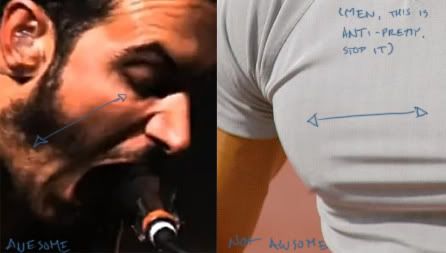
I wish I had a better reference of what's happening to the skin at a smaller lever there. All the little lines are stretching out the same way.
Fabric is good for thinking about crinkles, because it makes hills and valleys and folds. Remember, an active and impermanent crinkle is more roundy than a wrinkle.

I used rocky thoughts for:
Wrinkles of the long and canyonish kind. I like thinking of them as larger than they are because it reminds me to shade them properly.
And also small texture-y wrinkles of the tediousish kind. The kind you see on the back of one's hand remind me a lot of rock.

Faulty thoughts that I didn't think to think:
So the cool part is when you start thinking of these lines and wrinkles and breaks in the skin in terms of the motion of force. Just like they do with fault lines.

Compression is the folding and gathering of fabric, while tension is the same motion that causes the tiny-shirt/yelling wrinkles.
But in geology land, they also talk about shearing.
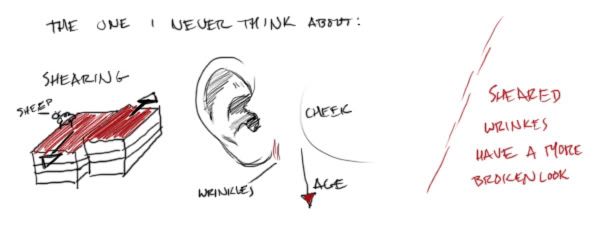
Shearing makes up for those magical wrinkles the happen when the poofier parts of the face start falling down. The deepening of the nasal fold (that dark fold that happens when you smile or sneer or cry) as one ages is mostly caused by a shearing action between the cheeks and the mouth area. Actually, I'm not going to say mostly just yet. It's probably different on different people. I'll get back to you on that.
I have to go draw some one now. So: THE END.

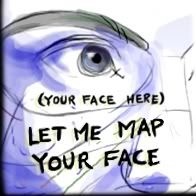



No comments:
Post a Comment